Osman Ramadan
N-grams Bayesian Differential Privacy
Jan 29, 2021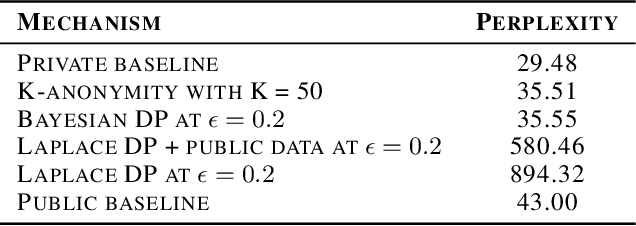
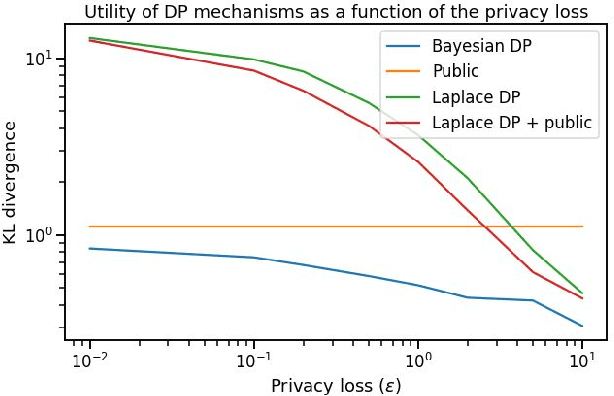
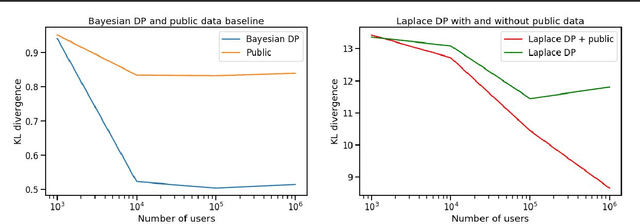
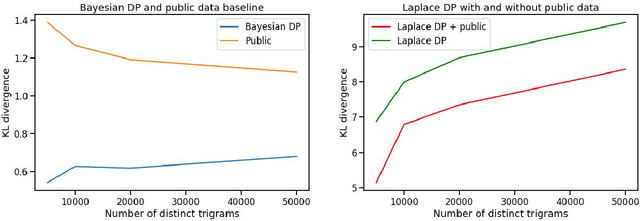
Abstract:Differential privacy has gained popularity in machine learning as a strong privacy guarantee, in contrast to privacy mitigation techniques such as k-anonymity. However, applying differential privacy to n-gram counts significantly degrades the utility of derived language models due to their large vocabularies. We propose a differential privacy mechanism that uses public data as a prior in a Bayesian setup to provide tighter bounds on the privacy loss metric epsilon, and thus better privacy-utility trade-offs. It first transforms the counts to log space, approximating the distribution of the public and private data as Gaussian. The posterior distribution is then evaluated and softmax is applied to produce a probability distribution. This technique achieves up to 85% reduction in KL divergence compared to previously known mechanisms at epsilon equals 0.1. We compare our mechanism to k-anonymity in a n-gram language modelling task and show that it offers competitive performance at large vocabulary sizes, while also providing superior privacy protection.
Privacy Analysis in Language Models via Training Data Leakage Report
Jan 14, 2021



Abstract:Recent advances in neural network based language models lead to successful deployments of such models, improving user experience in various applications. It has been demonstrated that strong performance of language models may come along with the ability to memorize rare training samples, which poses serious privacy threats in case the model training is conducted on confidential user content. This necessitates privacy monitoring techniques to minimize the chance of possible privacy breaches for the models deployed in practice. In this work, we introduce a methodology that investigates identifying the user content in the training data that could be leaked under a strong and realistic threat model. We propose two metrics to quantify user-level data leakage by measuring a model's ability to produce unique sentence fragments within training data. Our metrics further enable comparing different models trained on the same data in terms of privacy. We demonstrate our approach through extensive numerical studies on real-world datasets such as email and forum conversations. We further illustrate how the proposed metrics can be utilized to investigate the efficacy of mitigations like differentially private training or API hardening.
MultiWOZ - A Large-Scale Multi-Domain Wizard-of-Oz Dataset for Task-Oriented Dialogue Modelling
Sep 29, 2018



Abstract:Even though machine learning has become the major scene in dialogue research community, the real breakthrough has been blocked by the scale of data available. To address this fundamental obstacle, we introduce the Multi-Domain Wizard-of-Oz dataset (MultiWOZ), a fully-labeled collection of human-human written conversations spanning over multiple domains and topics. At a size of $10$k dialogues, it is at least one order of magnitude larger than all previous annotated task-oriented corpora. The contribution of this work apart from the open-sourced dataset labelled with dialogue belief states and dialogue actions is two-fold: firstly, a detailed description of the data collection procedure along with a summary of data structure and analysis is provided. The proposed data-collection pipeline is entirely based on crowd-sourcing without the need of hiring professional annotators; secondly, a set of benchmark results of belief tracking, dialogue act and response generation is reported, which shows the usability of the data and sets a baseline for future studies.
Deep learning for language understanding of mental health concepts derived from Cognitive Behavioural Therapy
Sep 03, 2018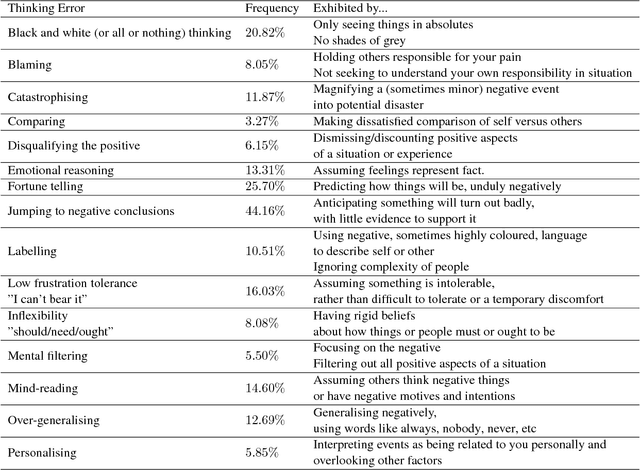
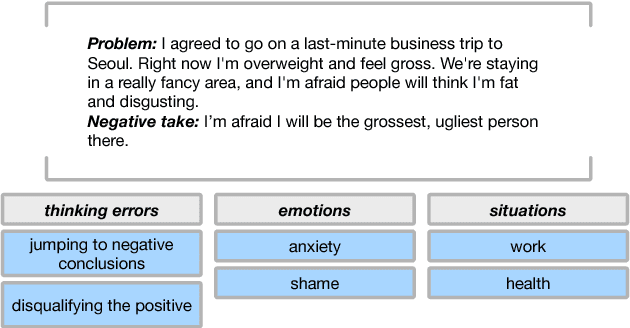

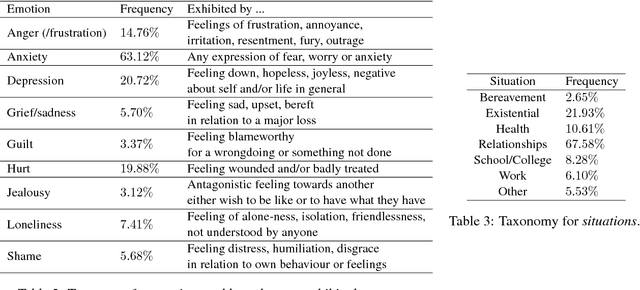
Abstract:In recent years, we have seen deep learning and distributed representations of words and sentences make impact on a number of natural language processing tasks, such as similarity, entailment and sentiment analysis. Here we introduce a new task: understanding of mental health concepts derived from Cognitive Behavioural Therapy (CBT). We define a mental health ontology based on the CBT principles, annotate a large corpus where this phenomena is exhibited and perform understanding using deep learning and distributed representations. Our results show that the performance of deep learning models combined with word embeddings or sentence embeddings significantly outperform non-deep-learning models in this difficult task. This understanding module will be an essential component of a statistical dialogue system delivering therapy.
Large-Scale Multi-Domain Belief Tracking with Knowledge Sharing
Jul 17, 2018


Abstract:Robust dialogue belief tracking is a key component in maintaining good quality dialogue systems. The tasks that dialogue systems are trying to solve are becoming increasingly complex, requiring scalability to multi domain, semantically rich dialogues. However, most current approaches have difficulty scaling up with domains because of the dependency of the model parameters on the dialogue ontology. In this paper, a novel approach is introduced that fully utilizes semantic similarity between dialogue utterances and the ontology terms, allowing the information to be shared across domains. The evaluation is performed on a recently collected multi-domain dialogues dataset, one order of magnitude larger than currently available corpora. Our model demonstrates great capability in handling multi-domain dialogues, simultaneously outperforming existing state-of-the-art models in single-domain dialogue tracking tasks.
 Add to Chrome
Add to Chrome Add to Firefox
Add to Firefox Add to Edge
Add to Edge